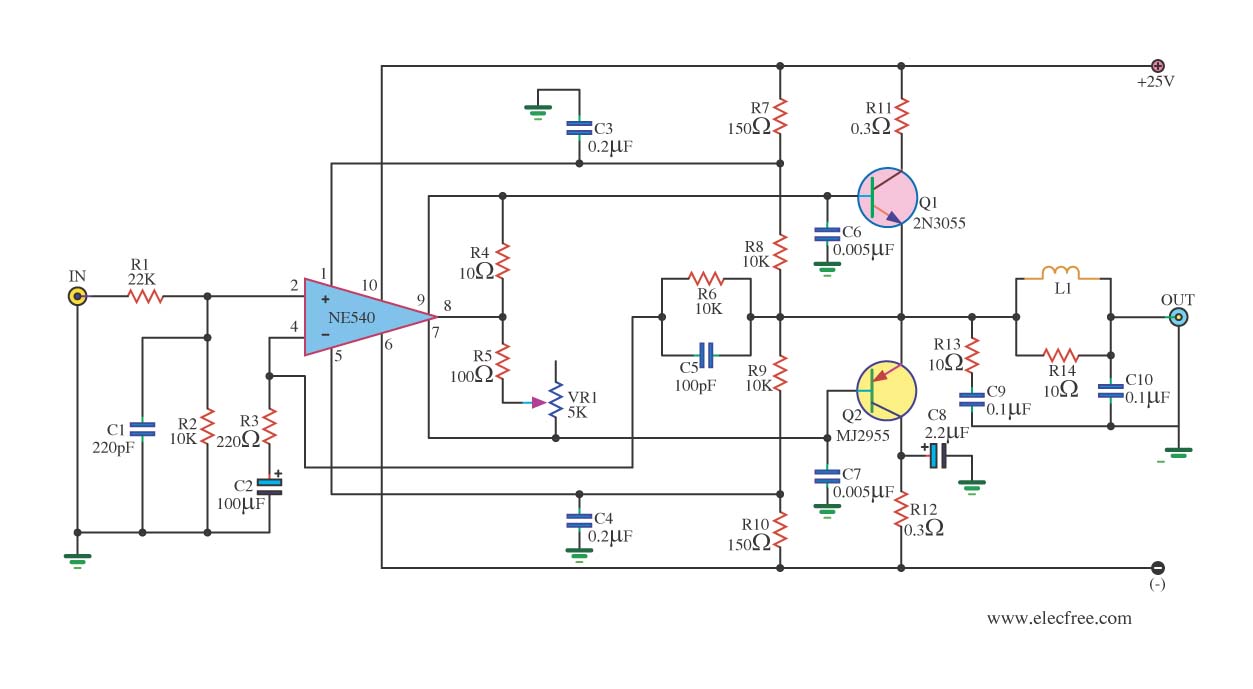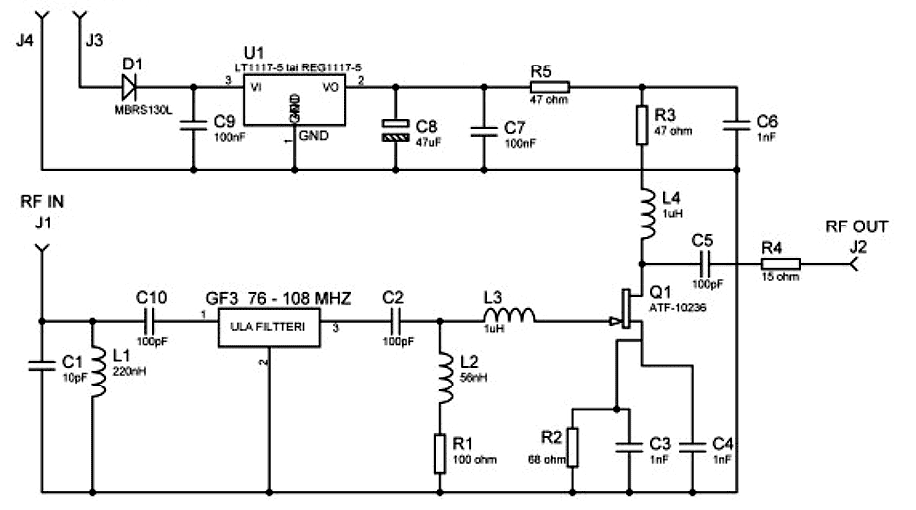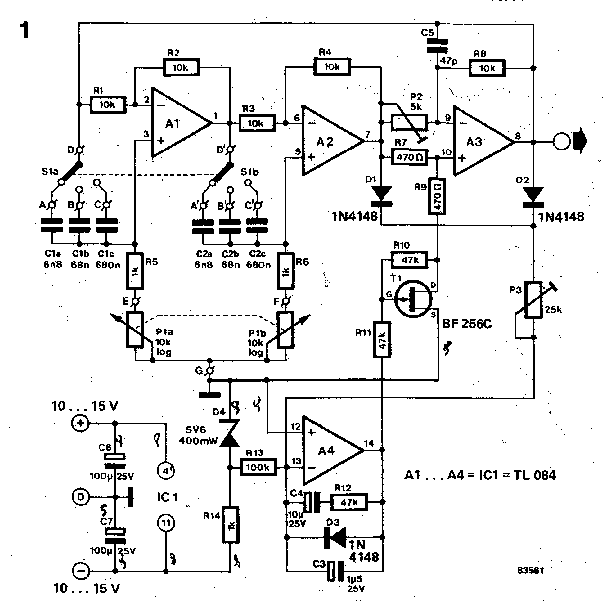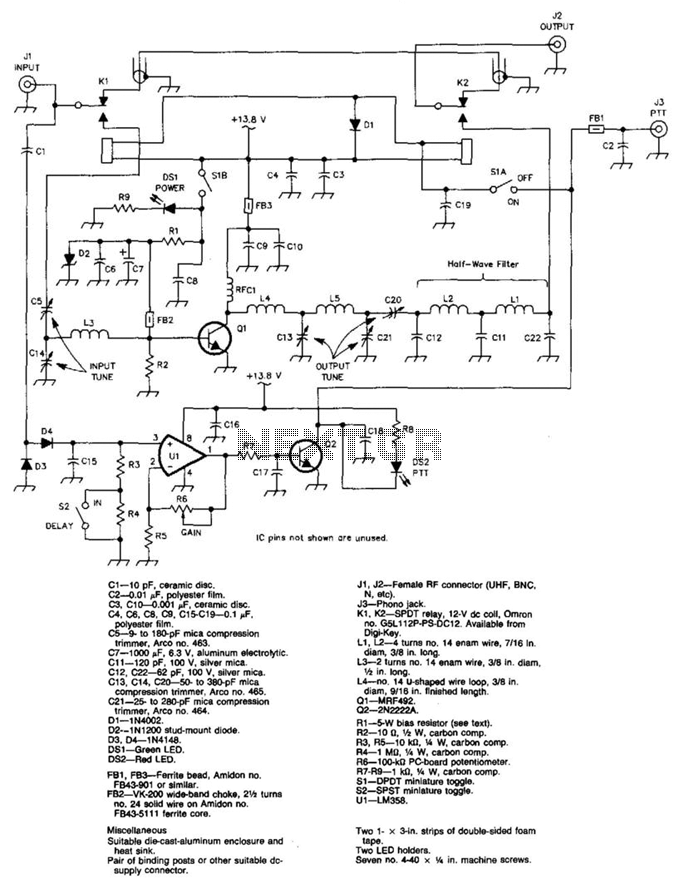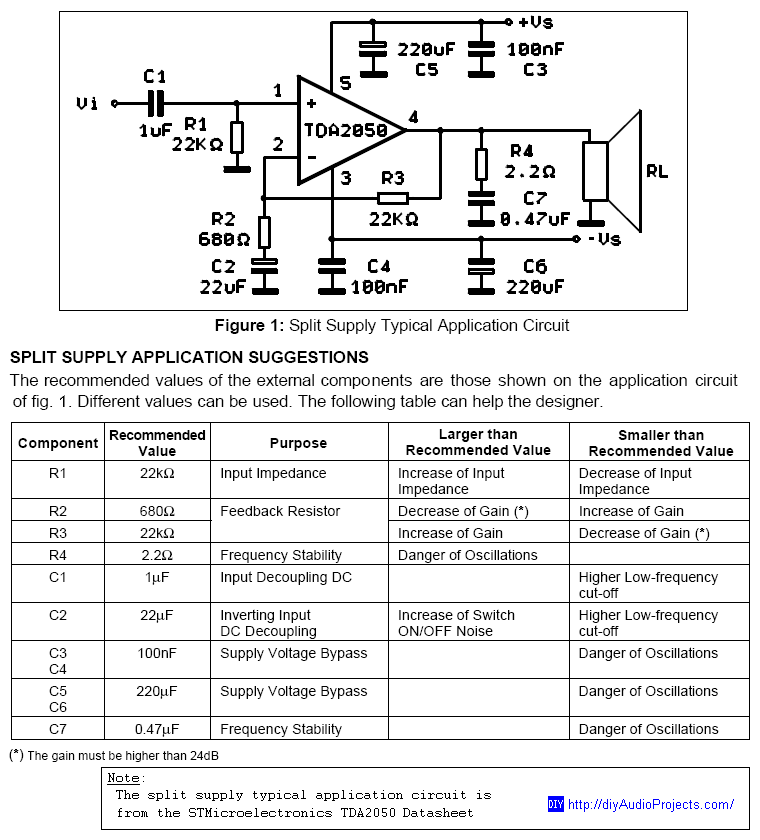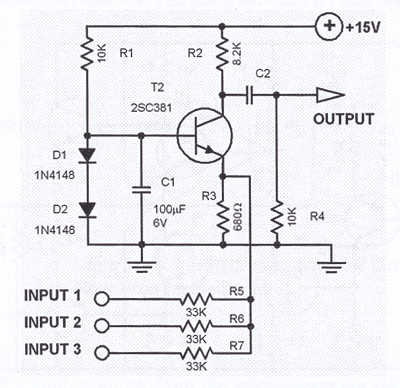
20Wpp Audio Amplifier with Bass
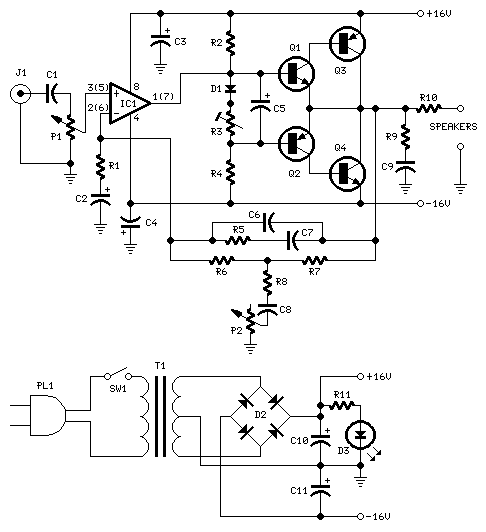
This design is based on an 18 Watt audio amplifier, developed primarily to accommodate the needs of users unable to find the TLE2141C chip. It utilizes the widely available NE5532 dual integrated circuit; however, its power output will be limited to a range of 9.5 to 11.5 watts, as the supply rails cannot exceed ±18V. Amplifiers of this type are often employed to drive small loudspeaker cabinets, which necessitates a compromise in the bass frequency range. To address this issue without compromising quality, a bass-boost control has been integrated into the amplifier's feedback loop. The bass lift curve can achieve a maximum of +16.4 dB at 50 Hz. Even with the bass control fully counterclockwise, the amplifier's frequency response exhibits a gradual increase: +0.8 dB at 400 Hz, +4.7 dB at 100 Hz, and +6 dB at 50 Hz (referenced to 1 kHz). Proper grounding is crucial for eliminating hum and ground loops. The ground connections for J1, P1, C2, C3, and C4 should converge at a single point. Additionally, C9 should be connected to the output ground.
This audio amplifier circuit is designed to deliver a balanced audio output while addressing the limitations of bass response in small loudspeaker systems. The NE5532 dual IC is a robust choice for this application due to its low noise characteristics and ability to drive moderate loads effectively. The amplifier operates within a specified voltage range, which restricts the output power but ensures stability and reliability.
The inclusion of a bass-boost control in the feedback loop is a significant feature, allowing users to enhance low-frequency performance without introducing distortion. The specified frequency response curve indicates that even at lower frequencies, the amplifier maintains a degree of clarity and presence, making it suitable for a variety of audio applications, including home theater systems and portable speaker setups.
Grounding is a critical aspect of this design, as improper grounding can lead to unwanted noise and interference. The recommendation to connect the ground points of multiple components at a single location helps to maintain a common reference point, reducing the risk of ground loops. Furthermore, the connection of capacitor C9 to the output ground aids in the stabilization of the output stage, ensuring that the amplifier operates efficiently and delivers a clean audio signal.
Overall, this amplifier design presents a practical solution for users seeking a compact and effective audio amplification system, leveraging commonly available components while providing features that enhance performance and usability.This design is based on the 18 Watt Audio Amplifier, and was developed mainly to satisfy the requests of correspondents unable to locate the TLE2141C chip. It uses the widespread NE5532 Dual IC but, obviously, its power output will be comprised in the 9. 5 - 11. 5W range, as the supply rails cannot exceed ±18V. As amplifiers of this kind are freque ntly used to drive small loudspeaker cabinets, the bass frequency range is rather sacrificed. Therefore a bass-boost control was inserted in the feedback loop of the amplifier, in order to overcome this problem without quality losses. The bass lift curve can reach a maximum of +16. 4dB @ 50Hz. In any case, even when the bass control is rotated fully counterclockwise, the amplifier frequency response shows a gentle raising curve: +0.
8dB @ 400Hz, +4. 7dB @ 100Hz and +6dB @ 50Hz (referred to 1KHz). A correct grounding is very important to eliminate hum and ground loops. Connect in the same point the ground sides of J1, P1, C2, C3 &C4. Connect C9 at the output ground. 🔗 External reference
This audio amplifier circuit is designed to deliver a balanced audio output while addressing the limitations of bass response in small loudspeaker systems. The NE5532 dual IC is a robust choice for this application due to its low noise characteristics and ability to drive moderate loads effectively. The amplifier operates within a specified voltage range, which restricts the output power but ensures stability and reliability.
The inclusion of a bass-boost control in the feedback loop is a significant feature, allowing users to enhance low-frequency performance without introducing distortion. The specified frequency response curve indicates that even at lower frequencies, the amplifier maintains a degree of clarity and presence, making it suitable for a variety of audio applications, including home theater systems and portable speaker setups.
Grounding is a critical aspect of this design, as improper grounding can lead to unwanted noise and interference. The recommendation to connect the ground points of multiple components at a single location helps to maintain a common reference point, reducing the risk of ground loops. Furthermore, the connection of capacitor C9 to the output ground aids in the stabilization of the output stage, ensuring that the amplifier operates efficiently and delivers a clean audio signal.
Overall, this amplifier design presents a practical solution for users seeking a compact and effective audio amplification system, leveraging commonly available components while providing features that enhance performance and usability.This design is based on the 18 Watt Audio Amplifier, and was developed mainly to satisfy the requests of correspondents unable to locate the TLE2141C chip. It uses the widespread NE5532 Dual IC but, obviously, its power output will be comprised in the 9. 5 - 11. 5W range, as the supply rails cannot exceed ±18V. As amplifiers of this kind are freque ntly used to drive small loudspeaker cabinets, the bass frequency range is rather sacrificed. Therefore a bass-boost control was inserted in the feedback loop of the amplifier, in order to overcome this problem without quality losses. The bass lift curve can reach a maximum of +16. 4dB @ 50Hz. In any case, even when the bass control is rotated fully counterclockwise, the amplifier frequency response shows a gentle raising curve: +0.
8dB @ 400Hz, +4. 7dB @ 100Hz and +6dB @ 50Hz (referred to 1KHz). A correct grounding is very important to eliminate hum and ground loops. Connect in the same point the ground sides of J1, P1, C2, C3 &C4. Connect C9 at the output ground. 🔗 External reference
